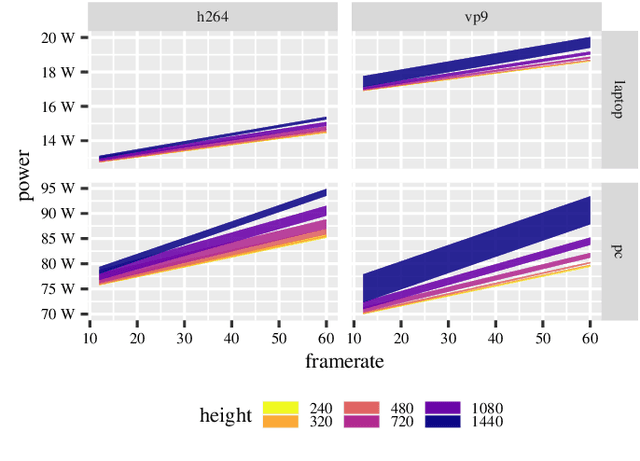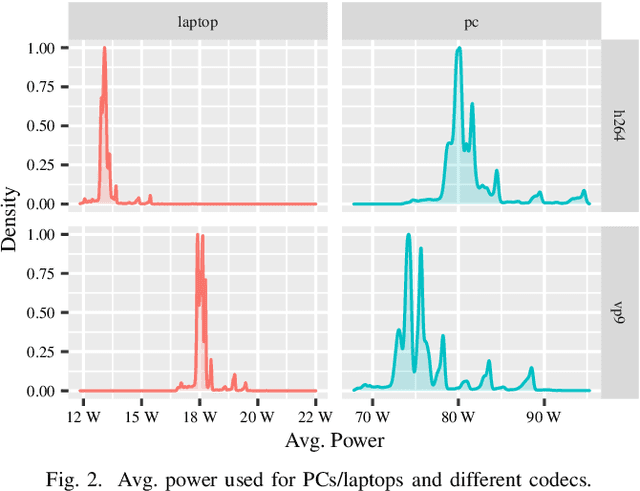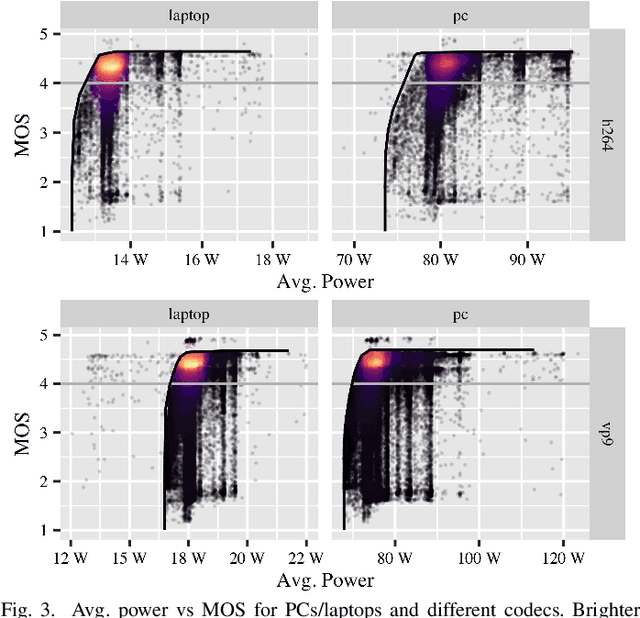Modeling of Energy Consumption and Streaming Video QoE using a Crowdsourcing Dataset
Paper and Code
Oct 11, 2022



In the past decade, we have witnessed an enormous growth in the demand for online video services. Recent studies estimate that nowadays, more than 1% of the global greenhouse gas emissions can be attributed to the production and use of devices performing online video tasks. As such, research on the true power consumption of devices and their energy efficiency during video streaming is highly important for a sustainable use of this technology. At the same time, over-the-top providers strive to offer high-quality streaming experiences to satisfy user expectations. Here, energy consumption and QoE partly depend on the same system parameters. Hence, a joint view is needed for their evaluation. In this paper, we perform a first analysis of both end-user power efficiency and Quality of Experience of a video streaming service. We take a crowdsourced dataset comprising 447,000 streaming events from YouTube and estimate both the power consumption and perceived quality. The power consumption is modeled based on previous work which we extended towards predicting the power usage of different devices and codecs. The user-perceived QoE is estimated using a standardized model. Our results indicate that an intelligent choice of streaming parameters can optimize both the QoE and the power efficiency of the end user device. Further, the paper discusses limitations of the approach and identifies directions for future research.
 Add to Chrome
Add to Chrome Add to Firefox
Add to Firefox Add to Edge
Add to Edge